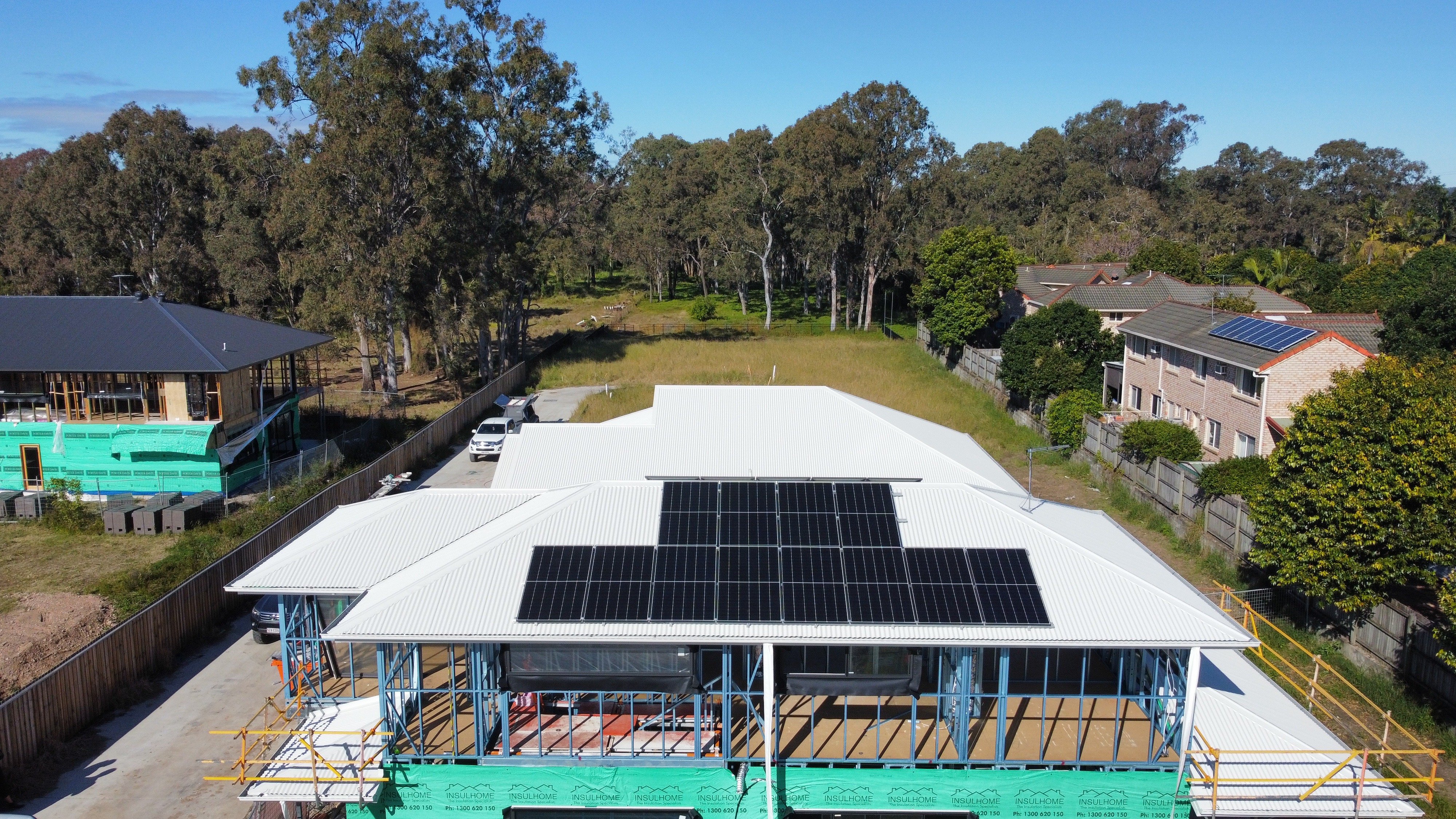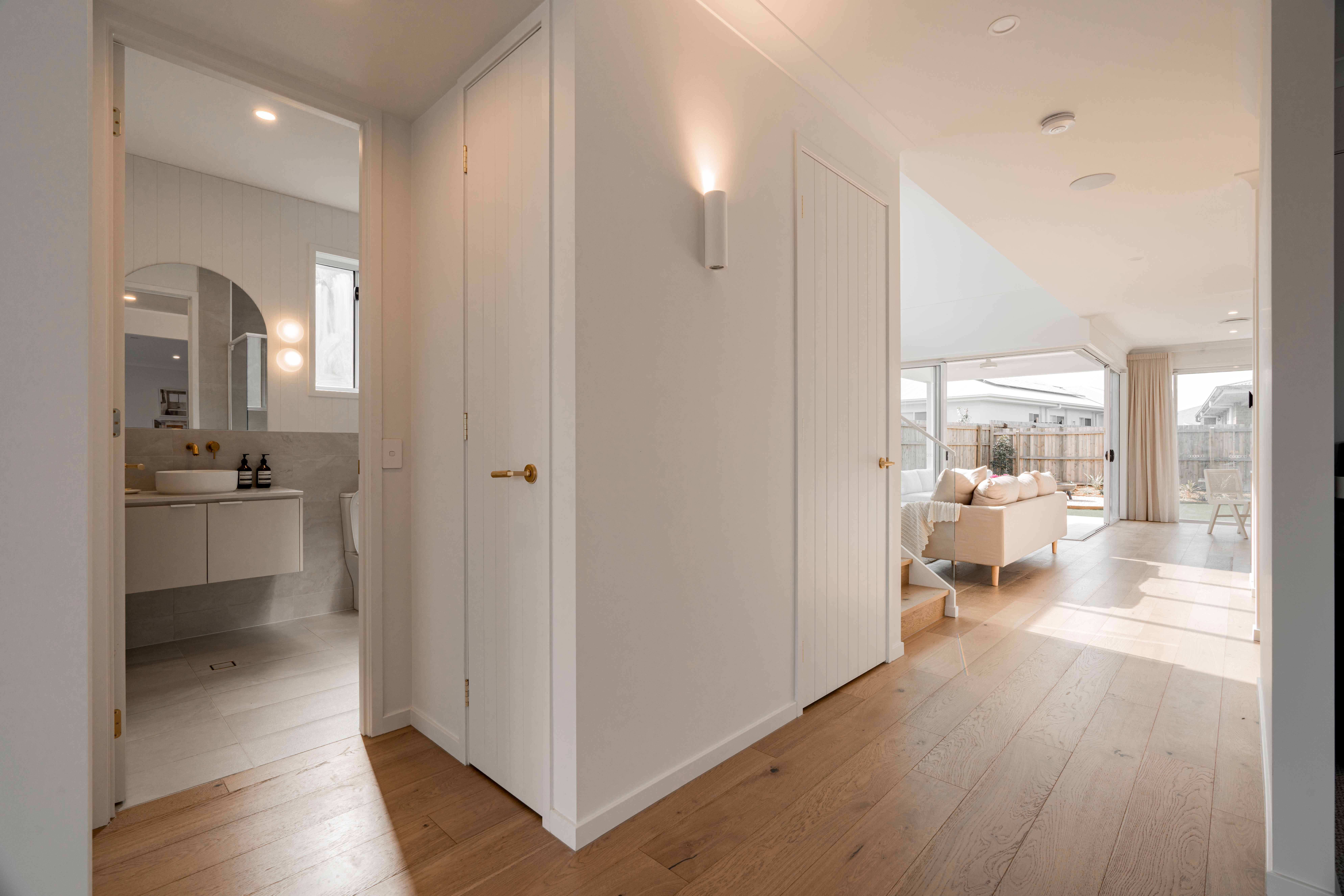Understanding the NCC 2022 & what it means for Livable Housing & Energy Efficiency
- Home Building Journey
- Building Tips
The National Construction Code (NCC) plays a vital role in shaping the building industry in Australia, providing guidelines and standards for construction, design, and performance of buildings. It was announced in 2022 that there would be a significant change to the code as part of the NCC 2022, particularly in the areas of Livable Housing and Energy Efficiency. While there have been delays in the role out of this code, the changes are due to come into effect in Queensland on 1 October 2023. In this blog, we will explore the key changes coming into effect, their potential cost impacts, and what they mean for homeowners and builders.
Livable Housing Standards
The NCC 2022 introduces mandatory provisions to enhance the accessibility and liveability of homes. These changes are designed to make homes more inclusive and easier to navigate for individuals of all ages and abilities. Here are the main changes to be aware of:
- Step-Free Path of Travel: Homes will be required to have a step-free path from the boundary to the front or entrance door, ensuring adequate width and gradient to accommodate accessibility needs.
- Level Entrance: Dwellings must have a step-free level entrance, incorporating a step ramp or a threshold of a maximum height. A landing area at the entrance is also required.
- Doorway Width: Entrance doors and doors to habitable rooms, sanitary compartments, and the laundry (if located on the entrance level) must have a minimum clear width of 820mm.
- Corridor Width: Corridors connecting doorways that require the minimum opening must have a minimum clear width of one meter.
- Accessible Toilet and Shower: The ground or entrance level must include a toilet with specific width requirements. Additionally, at least one shower in the dwelling should be step-free and hobless, with provisions for grab rail installation in the framing surrounding the toilet, shower, and bath.
Impacts of these changes
These changes will require home designs to include step-free entry points, wider hallways and doors, larger bathrooms to accommodate swing space and step-free showers, and reinforced framing to facilitate future grab rail installation. We are in the process of evaluating our current ranges of home designs to ensure they comply with the new code, as well as introducing some brand-new designs. Cost impacts for these changes are still unclear but there is a strong indication that there will be some cost increases to ensure compliance.

Energy Efficiency
The NCC 2022 also brings significant changes to enhance energy efficiency and reduce condensation in residential buildings. These changes will reduce your home's burden on the environment and energy grid. While the final form is yet to be signed off by Building Ministers, expected requirements include:
- Thermal Performance: The thermal performance target will increase from 6 to 7 stars for houses and an average of 7 stars for apartments.
- Energy Usage Budget: New provisions will introduce a “whole of home” approach for calculating energy usage of fixed building services, encompassing heating and cooling, hot water, lighting, and swimming pool and spa plant.
- Thermal Bridging: Steel framing will have new thermal bridging provisions to reduce heat transfer.
- Wall Wrap Permeability: There will be more stringent requirements around wall wrap permeability which will vary by state and their climate zone.
- External Ducting: Mandatory provisions for external ducting and roof space ventilation
- Flow Rates: A prescribed flow rate will be introduced for exhaust fans, rangehoods, and provisions for make-up air in laundries and run off timers for bathroom exhausts.
Impacts of these changes
To meet the enhanced energy requirements, homeowners may face increased costs upfront to achieve Building Approval. It is important to note that these investments into energy efficiency, while a potential larger cost from the outset, may lead to long-term energy savings and a more comfortable living environment. It is likely as more information is released, more cost-effective options to achieve energy efficiency should become more accessible. There is still uncertainty around parts of the NCC 2022 and QDC as well as having the necessary software to assess the updated energy efficiency readily available
Implementation Dates
The NCC 2022 came into effect on May 1, 2023. DC Living is already complying with the relevant changes, particularly, waterproofing, fire safety, plumbing, and framing. The Livable Housing Standards and Energy Efficiency will be implemented from 1 October, 2023. Building approvals submitted before this date do not need to comply with these regulations.
Accessing the Changes
To obtain a copy of the NCC 2022 changes, you can download Volumes One, Two, and Three from ncc.abcb.gov.au. Keep in mind that NCC 2022 is being finalised in two stages, with energy efficiency and condensation management provisions to be published after the next Building Ministers meeting in August 2023.
The NCC 2022 introduces significant changes to improve accessibility, liveability, and energy efficiency in residential buildings. While the exact cost impacts can vary, it is clear that construction costs will increase. Homeowners should be prepared for modified home designs and potential higher upfront costs when building new, however, it is important to take into consideration the long-term benefits that these changes offer.
Here at DC Living, our Managing Director Gelly Augostis is a member of the HIA Technical Committee and is, therefore, well-informed of these changes and their impacts. Our team has attended seminars put on by the HIA and Certifiers to learn more about this code, and our team of New Home Consultants is being thoroughly briefed on these changes too. We are here to guide you and answer any questions that you may have. Feel free to contact us today. Otherwise for more information, please visit the HIA website.

